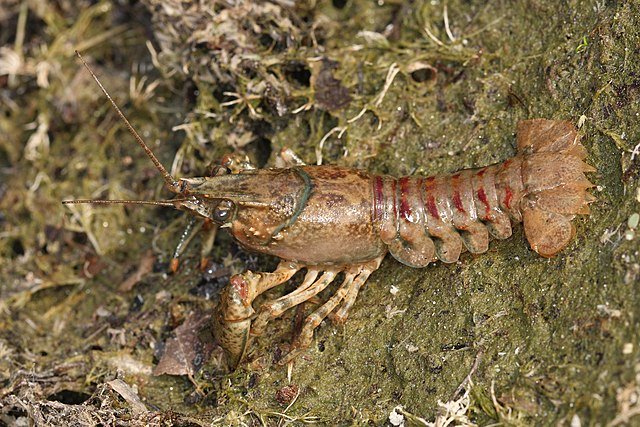
Invasive Species | Fish and Invertebrates
Invasive Crayfish
Invasive Crayfish
Spinycheek crayfish (Orconectes limosus) and the Virile crayfish (O. virilis).
French common name: Les écrevisses
Invasive crayfish are very aggressive, and outcompete our native crayfish for food and resources, which impacts larger aquatic food webs. They can also impact native fish species by damaging aquatic vegetation necessary for reproduction and spawning. Invasive crayfish can also spread rapidly, as females produce large amounts of eggs every year and carry them under their tail to protect them from predation.
Characteristics
Size: Invasive crayfish are typically larger than our native crayfish, growing up to 55mm in length versus the native at 30 mm.
Shape: Prominent spines on the side of the head, in general, invasive crayfish also have a longer point between their eyes (known as a rostrum) compared to the native species.
Coloration: A pair of brownish, greenish, or reddish spots on the top of the tail section.
Key ID Features
Unknown
White spines visible on cheek of Spiny Cheek Crayfish
Milewicz
Red bars visible across tail segments of Spiny Cheek Crayfish
Common Look-a-Likes
Unknown
Appalachian Brook Crayfish (Cambarus bartonii)
Native species of crayfish
Smaller than invasives by 20mm
Uniform color throughout body, appearing darker with age





